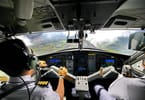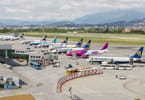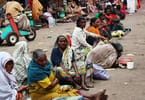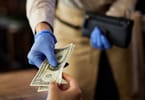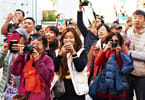Norge and Fred Brown had plenty of time before their flight to Phoenix a few weeks ago, so they made up a new game: Count the colossal carry-on bags.
From their seats at a US Airways gate in Charlotte, N.C., the Tempe retirees tallied 17 carry-on bags checked by airline officials on one flight because they were deemed too large for the overhead bins.
They also counted the amount of money the airline collected from passengers whose bags were tagged at the last minute: nothing.
The Browns paid $40 at the ticket counter to check two bags.
“Those were all free,” Brown said. “It’s just not fair.”
With airlines now charging as much as $25 each way to check a single bag -saddling a vacationing family of four with a $200 round-trip tab – a new breed of traveler has emerged.
Call them bag-fee dodgers, passengers who are bulking up purses, computer bags and backpacks, stuffing traditional carry-ons and, at the extreme, trying to haul full-size Samsonites on board, all to reduce or avoid a baggage bill.
Melissa Rein, a public-relations director who lives in Scottsdale, unapologetically puts herself in that category.
She used to check her overstuffed, wheeled garment bag but carried it on a US Airways flight to San Francisco in July to save the $15 or $20 that US Airways would have charged each way to check it. Rein also squeezed an extra-large “purse,” filled with magazines, books, a camera, her toiletries and another purse, under the seat. She ignored fellow passengers’ eye rolls as her boyfriend stuffed the garment bag into the overhead bin.
“It’s an outrageous fee,” she said. “When we try to get away for a little weekend, if we have to pay those fees, it completely devalues the trip.”
The increase in carry-ons, and wannabe carry-ons, coming at a time of packed flights is filling up overhead bins faster than ever, raising safety concerns over falling heavy bags and turning already-stretched airline employees into baggage police.
Most airlines allow passengers to carry on one small piece of luggage (generally a maximum of 45 to 50 linear inches and 40 pounds) and one personal item such as a purse or computer. Everything else is supposed to be checked.
U.S. Rep. Dan Lipinski, D-Ill., has proposed legislation to regulate the size of carry-ons and have the Transportation Security Administration enforce the standards.
US Airways acknowledged the challenges of increased carry-ons in a memo to employees last month after it announced a $5 increase in its bag fees beginning in October. President Scott Kirby said the carrier would be vigilant about catching oversize carry-ons at the ticket counter, in security lines and at the gate, noting that managing excess carry-on bags is “not a drill anyone enjoys.”
US Airways’ flight-attendants union estimates that carry-ons are up at least 20 percent.
Kerry Hester, the airline’s vice president of customer-service planning, said US Airways added employees at security checkpoints during busy times to catch passengers with oversize bags or too many carry-ons. Employees are directed to send those with too many carry-ons or extra-large or heavy carry-ons back to the ticket counter.
That’s not always possible in practice, gate agents say.
“If I had to stand there and argue with every passenger who came through, I could never get a plane out on time,” said one Phoenix gate agent who declined to be identified because her airline has a policy against speaking to the media. “You just have to let things go until you get a call (from the plane) or until your computer says the bins are full, start checking.”
Fred Scheske of Surprise was so steamed to watch five passengers have their bags checked for free at the gate on a US Airways flight in June that he protested his $17 baggage charge with his credit-card company and received a credit.
“It wasn’t the money; it was just the principle of the thing,” he said.
Emily Wold, a Gilbert mother of five, was adamant about not checking bags on her family’s summer vacation. The bag fees would have cost more than the $180 in taxes and frequent-flier service fees they paid for flights using their miles.
They carried on four small suitcases and two new $10 duffel bags from Target – all regulation size per the specs she downloaded from US Airways’ Web site. No bags were checked.
“I would do it again,” she said. “It was a little bit (much) to carry all the stuff, but I put my kids to work.”
WHAT TO TAKE AWAY FROM THIS ARTICLE:
- She used to check her overstuffed, wheeled garment bag but carried it on a US Airways flight to San Francisco in July to save the $15 or $20 that US Airways would have charged each way to check it.
- Fred Scheske of Surprise was so steamed to watch five passengers have their bags checked for free at the gate on a US Airways flight in June that he protested his $17 baggage charge with his credit-card company and received a credit.
- US Airways acknowledged the challenges of increased carry-ons in a memo to employees last month after it announced a $5 increase in its bag fees beginning in October.





